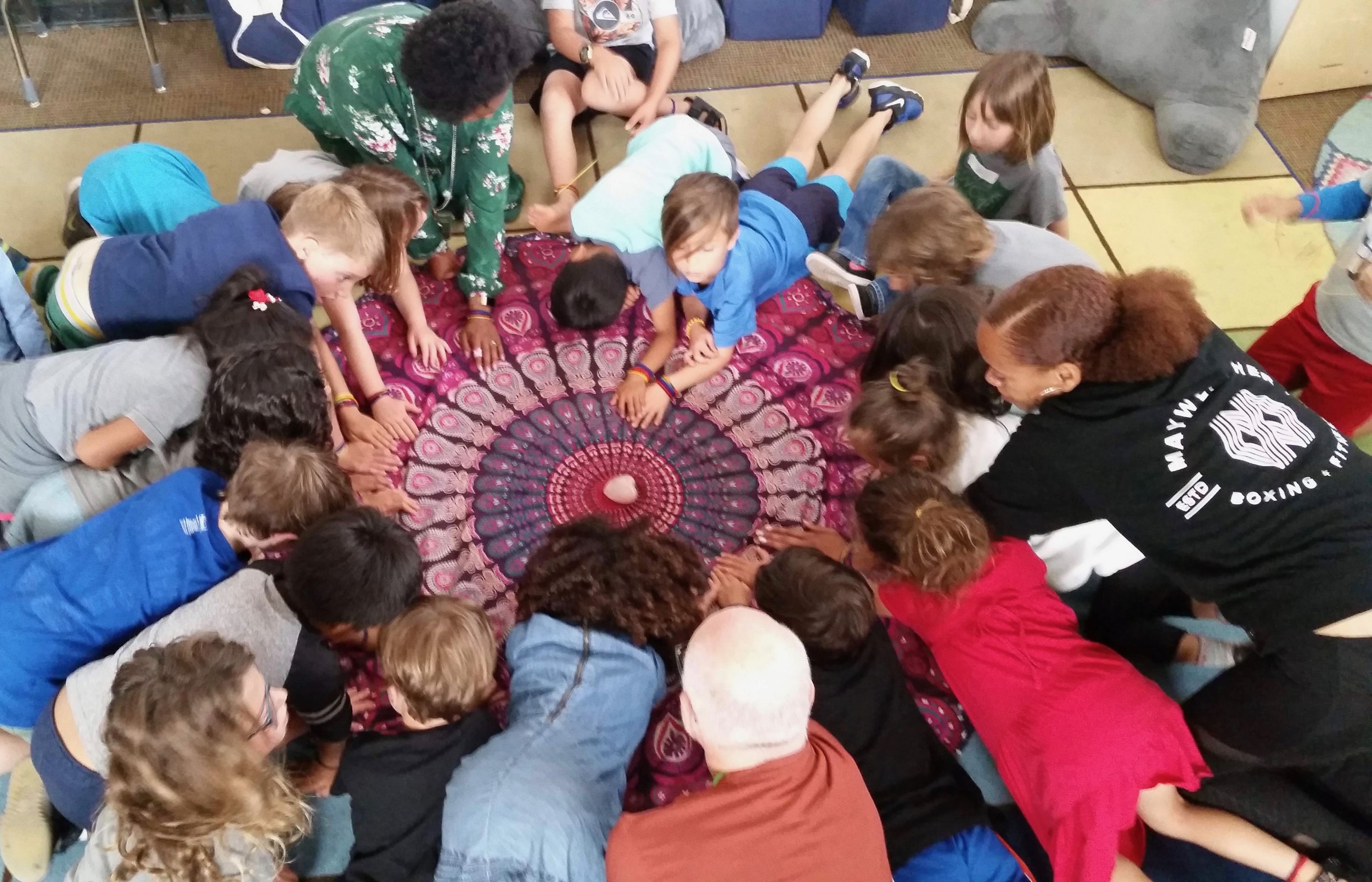FAQ
Frequently asked questions.
Frequently asked Questions
-
We define “circle” as anything we do with a heightened awareness of self and other (people and elements of the natural world). By this definition you can have a circle with yourself as in meditation or other forms of self-inquiry. A circle can be just two individuals who commit to listen deeply to self and other. And a circle can include the whole community. In circle, we turn towards each other and issues of interest, concern, or celebration. In addition, we consider circle a worldview gifted to us from people who lived close to the earth and close to each other. In that worldview, everyone is precious and essential; no one is expendable. When harm or transgressions of norms occur, there must be healing (restoration or transformation).
-
We learned about circle practices over many years through a lineage initiated at the Ojai Foundation in California. Founded by Joan Halifax in the early 70’s, TOF invited teachers from around the world, representatives of wisdom traditions, indigenous elders, scientists, poets, artists, and philosophers. Each brought a unique perspective. What was unique about these residences and retreats was that each included the practice of Council. Ideas and wisdom were imparted by the teachers, but all participants had the opportunity to receive the “talking piece” to note, in circle, how the material touched their lived experience.
We also acknowledge that circle practice is pancultural. Every culture has developed some form of structured, dialogic practice. At Circle Ways we borrow from the commonalities we find in these practices.
-
The Way of Council is a book first published in 1996 by Jack Zimmerman and Virginia Coyle. It is a synthesis of their experiences with circle at the Ojai Foundation and elsewhere. It lays out a process for developing integrity in the facilitation of circles in communities, organizations, families, and schools. Our founders and many others were mentored by the authors. Our branch of the “council tree” has grown primarily in the soil of public schools.
-
A circle-based pedagogy is a view of education based on connection—to self, others, and the greater good. A circle-based pedagogy respects the unique perspectives and experiences of all participants; engages all learners in the co-creation of meaning; acknowledges the teacher in the student and the student in the teacher; and links academic, relational (social-emotional), and student-directed learning. It aligns process with content and creates relevance by linking both to the experiences and needs of learners. It encourages ownership, responsibility, and agency in the process and application of learning.
-
We are sensitive to issues of cultural appropriation, and we are constantly learning and evolving our awareness. When we borrow a process or activity from an indigenous culture, we always note and honor its origin. As noted above, we have synthesized what we see as commonalities from many cultural practices, and we present them in ways that both honor their origins and speak into secular educational and organizational cultures. In the US, circle practice is associated the Native Americans. We find, however, that circle ways are present in all indigenous cultures worldwide.
-
The “four intentions” of Council are from Zimmerman and Coyle’s book The Way of Council. They are...
Speak from the heart
Listen from the heart (suspending judgment)
Speak spontaneously (without pre-planning)
Speak leanly (get to the heart of the matter)
When we ask individuals in groups what they would need to be able to speak their truths and to listen to the truths of others in the circle, it often boils down to these four intentions. There is also a need often expressed to not share the stories of others with anyone outside the group. It is fine to relay the story you told or any gleanings you gathered from listening to others. While these four intentions can engage a lifetime of practice, we find it is best to have each group create their own norms.
-
In our experience, a systemic circle practice takes at least three years to establish. The first year is focused on...
Training and supporting all staff to begin facilitating circles.
Establishing regularly scheduled student circles, staff circles, parent circles, and whole community gatherings.
Initiate and coach a Circle Ways Committee (or “culture committee”) a group of stakeholders that becomes a go-to resource for others on the campus.
The second year involves...
Training all staff in “restorative” practices and protocols for healing from relational harm.
Continuing support for the committee as they take on facilitation of staff, parent, and community circles and mediating conflict through restorative circles.
Youth leadership training
Training and supporting any new staff.
The third year often concentrates on...
Continued support for the committee.
Continued youth training and initiating a Student Restorative Team.
Refreshers, professional development, and retreats.
Training and supporting any new staff.
-
To establish a true culture shift, it is critical to have all staff members included in trainings and staff circles. Doing so deepens awareness of the community as a whole and a common language for practice and protocols are understood by all. Teaching staff professional development focused on the integration of circle practice to support content-area, academic objectives and “Advisory,” “Human Development,” “Connections” or other periods devoted to social-emotional learning.
-
Training: All staff should have The Introduction to Circle Ways and The Foundations of Restorative Practices. There should also be circle-focused professional development.
Systemic practice: students every week for 1 hour, less for the littlest ones; at least monthly staff circles focused on educator “mysteries”; once monthly (or more) parent circles focused on parent “mysteries”; community circles least four times a year.
Scheduling: All dates for circles should be in the calendar before the school year begins. These times should be treated as inviolable. In stressful times, like the approach of standardized tests, circles are needed more than ever. Further, consistent scheduling provides structure for students and allows teachers to say, “Let’s bring that to the circle!”
Leadership participation: Administrators must be willing to sit in the circles and become one among many. The indigenous model of leadership brings a leader forward when there is a particular need in the community, and then, when the task is completed, the leader returns to be one voice in a circle of equals. There is a delicate dance between what we call the “horizontal” and the “vertical” axes of authority. A supervisor with staff presents the same challenges as a teacher with students. In both cases, “leader” must participate fully and trust that staff and students can navigate the same person having different roles.
A Circle Ways or Culture Committee: There are always certain staff who can read the relational field on a campus. With guidance from a Circle Ways coach, this group becomes a go-to for all things circle and is key to sustainability.
Staff trained in restorative conferencing: Circle Ways coaches provide neutral, outside mediation with issues of relational harm. At the same time, a group of staff members are trained and coached in restorative conferencing.
Handing off – Youth Leadership: Circle practice is a “portable” skill, one that students can take with them into future work, family, and community relationship. Circle is an infrastructure for collaboration applicable in many contexts. If students begin practice in kindergarten (or before), by the time they reach third grade, they are ready to begin facilitating circles. A Student Restorative Team learns to conduct mediation of peer conflicts.
-
Use this link to access the Circle Ways Suggested Reading list.
-
Use this link to access all Studies and Publications connected to Circle Ways.


